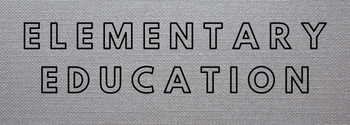Unpacking The Definition Of Collaborative Writing
Collaborative writing, also known as collective or team-based writing, is a dynamic and increasingly popular method of creating written works. In this approach, multiple individuals work together to create a cohesive piece, relying on shared techniques and cooperative processes. While the concept may seem simple, the actual execution of collaborative writing involves a complex interplay of ideas, perspectives, and skills. In this article, we will explore the definition of collaborative writing and delve into the methods, benefits, and challenges of working together in the writing process.
Collaborative Writing: Exploring the Power of Teamwork
Collaborative writing can be defined as a process of working together in creating a written piece. It involves two or more individuals coming together to brainstorm, plan, and create a written work. This approach to writing has gained popularity in recent years, especially in the academic and professional world where teamwork and cooperation are highly valued.
Exploring collaborative writing allows us to see the benefits of working together in writing. In this article, we will delve deeper into this topic to understand what collaborative writing is, how it works, and its advantages over traditional individual writing methods.
Defining Collaborative Writing
The collaborative writing process involves a collective effort from a group of writers in creating a written piece. This group can consist of two or more individuals who collaborate through various stages of the writing process. These stages include planning, drafting, revising, and editing, where each member contributes their ideas and expertise to produce a cohesive final product.
Unlike individual writing, which is mostly a solitary activity, collaborative writing emphasizes the power of teamwork and the blending of diverse perspectives and skills. It is a joint effort that allows for a more comprehensive and well-rounded approach to writing.
Link: What is Collaborative Writing?
The Collective Writing Process
The core of collaborative writing lies in the concept of shared responsibility and participation. In this approach, each member is assigned a specific role within the group, and everyone works towards a common goal, which is the creation of a written piece.
The first step in the collective writing process is brainstorming, where all members come together to discuss and generate ideas. This stage allows for the exploration of different perspectives, leading to a more diverse pool of ideas. Once the group has agreed upon a central idea, they move on to planning the structure and content of the written work.
During the drafting stage, each member is responsible for writing a specific section or chapter, depending on their assigned roles. The written pieces are then shared and combined, creating a more cohesive and comprehensive draft. The next steps involve revising and editing the draft collectively, where each member can provide feedback and suggestions for improvement.
The Power of Joint Authorship and Writing
One of the key benefits of collaborative writing is the power of joint authorship. This approach acknowledges that writing is not solely an individual effort, but rather a collaborative process that requires the input and expertise of multiple individuals.
The sense of ownership and accountability in joint authorship encourages all members to contribute their best efforts towards the final product. This leads to a higher standard of work as everyone is invested in the outcome. It also fosters a sense of mutual respect and appreciation for each other’s skills and ideas.
Moreover, joint authorship allows for the development of a more diverse and well-rounded piece of writing. Each member brings their unique background, experiences, and perspectives, resulting in a more comprehensive and dynamic composition.
The Benefits of Team-Based Writing
The advantages of collaborative writing go beyond just producing high-quality written work. It also promotes the development of essential skills such as communication, teamwork, and time management.
Collaborative writing encourages effective communication among team members, as individuals must articulate their ideas and provide constructive feedback to others. This skill is beneficial not only in the writing process but also in the workplace and other areas of life.
Additionally, teamwork is an essential aspect of collaborative writing. It teaches individuals how to work effectively in a group, delegate tasks, and resolve conflicts, all of which are valuable skills in any team-based environment.
Moreover, the collaborative writing process requires effective time management to meet deadlines and ensure a smooth workflow. This skill is transferable to various aspects of life and can help individuals become more organized and productive.
Cooperative Writing Methods
There are various methods of collaborative writing that groups can employ to work together effectively. Some popular techniques include round-robin writing, where each member takes turns writing sections of the work, and peer editing, where members review and provide feedback on each other’s writing.
Another effective method is the use of project management tools such as Google Docs, Trello, or Asana, where members can collaborate and track the progress of the written work in real-time. These tools allow for efficient communication and organization, making the writing process more seamless and productive.
Shared Writing Techniques
Shared writing techniques are also beneficial in collaborative writing. These techniques involve breaking down the writing process into smaller tasks and assigning them to different members based on their strengths and expertise. For example, one member may excel in research, while another may be skilled at writing conclusions.
Another shared writing technique is the use of peer workshops, where members can provide feedback and suggestions for improvement on each other’s writing. This not only helps improve the final product, but it also promotes learning and growth among team members.
Collaborative Manuscript Creation
In academic settings, collaborative writing is becoming increasingly popular in creating manuscripts for publication. This approach allows for a more comprehensive and well-researched piece, as multiple researchers and experts contribute their knowledge and findings.
It also reduces the workload for individual researchers, making the process more manageable and less time-consuming. Furthermore, collaborative manuscript creation promotes a culture of shared knowledge and encourages collaboration in the academic community.
The Community Writing Approach
Collaborative writing can also extend beyond traditional group settings to include communities and organizations. This approach, known as community writing, involves incorporating the voices and perspectives of a specific community or group into written works.
In this sense, the writing process is not solely about producing a final product but also about building relationships and amplifying marginalized voices. It is a powerful tool for promoting social change and empowering communities.
In Conclusion
In today’s fast-paced world, where teamwork and collaboration are highly valued, exploring collaborative writing is essential. Its benefits go beyond just improving the quality of written work; it teaches essential skills and promotes a culture of shared knowledge and respect.
Whether it is in academic or professional settings, or even within communities, collaborative writing allows for the blending of diverse perspectives and skills, resulting in stronger and more impactful written works.
Link: What is Collaborative Writing?
So, the next time you have a writing project, consider working together with others to explore the power of teamwork and collaboration in creating a written masterpiece.
In conclusion, collaborative writing is an increasingly popular approach to the writing process, where individuals come together to work on a shared piece of writing. The definition of collaborative writing goes beyond simple teamwork and involves a deeper level of cooperation and collective decision-making. Through exploring different methods and techniques, such as joint authorship, team-based writing, and community writing, groups can effectively create a cohesive manuscript. This approach not only enhances the quality of the final product but also fosters valuable skills such as communication, compromise, and creativity. As technology continues to advance, the potential for collaborative writing will only grow, providing even more opportunities for individuals to work together and produce exceptional written works. Overall, collaborative writing is a powerful tool for writers, enabling them to achieve greater success and achieve their writing goals.



